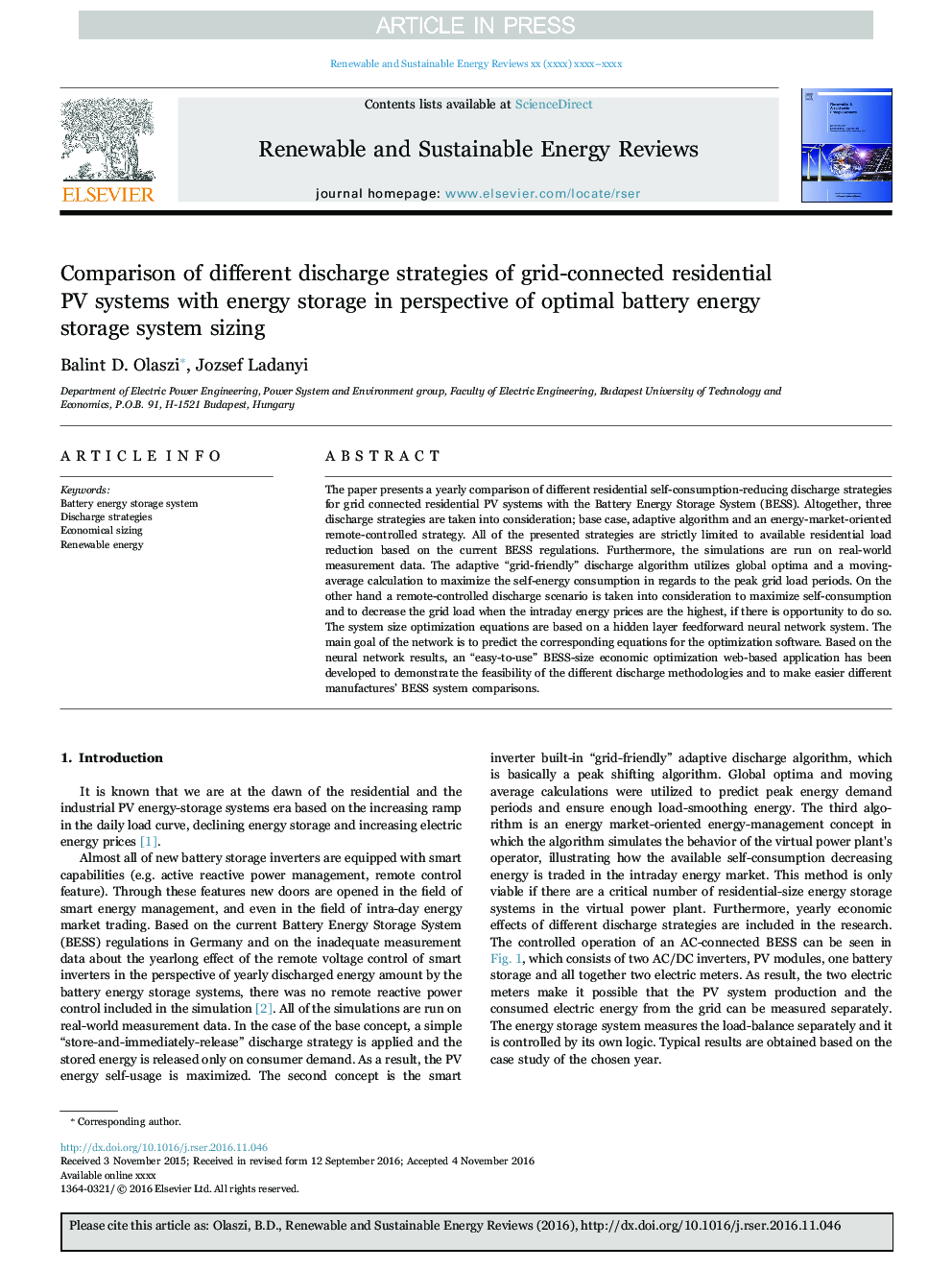| Article ID | Journal | Published Year | Pages | File Type |
|---|---|---|---|---|
| 5482875 | Renewable and Sustainable Energy Reviews | 2017 | 9 Pages |
Abstract
The paper presents a yearly comparison of different residential self-consumption-reducing discharge strategies for grid connected residential PV systems with the Battery Energy Storage System (BESS). Altogether, three discharge strategies are taken into consideration; base case, adaptive algorithm and an energy-market-oriented remote-controlled strategy. All of the presented strategies are strictly limited to available residential load reduction based on the current BESS regulations. Furthermore, the simulations are run on real-world measurement data. The adaptive “grid-friendly” discharge algorithm utilizes global optima and a moving-average calculation to maximize the self-energy consumption in regards to the peak grid load periods. On the other hand a remote-controlled discharge scenario is taken into consideration to maximize self-consumption and to decrease the grid load when the intraday energy prices are the highest, if there is opportunity to do so. The system size optimization equations are based on a hidden layer feedforward neural network system. The main goal of the network is to predict the corresponding equations for the optimization software. Based on the neural network results, an “easy-to-use” BESS-size economic optimization web-based application has been developed to demonstrate the feasibility of the different discharge methodologies and to make easier different manufactures' BESS system comparisons.
Related Topics
Physical Sciences and Engineering
Energy
Renewable Energy, Sustainability and the Environment
Authors
Balint D. Olaszi, Jozsef Ladanyi,
